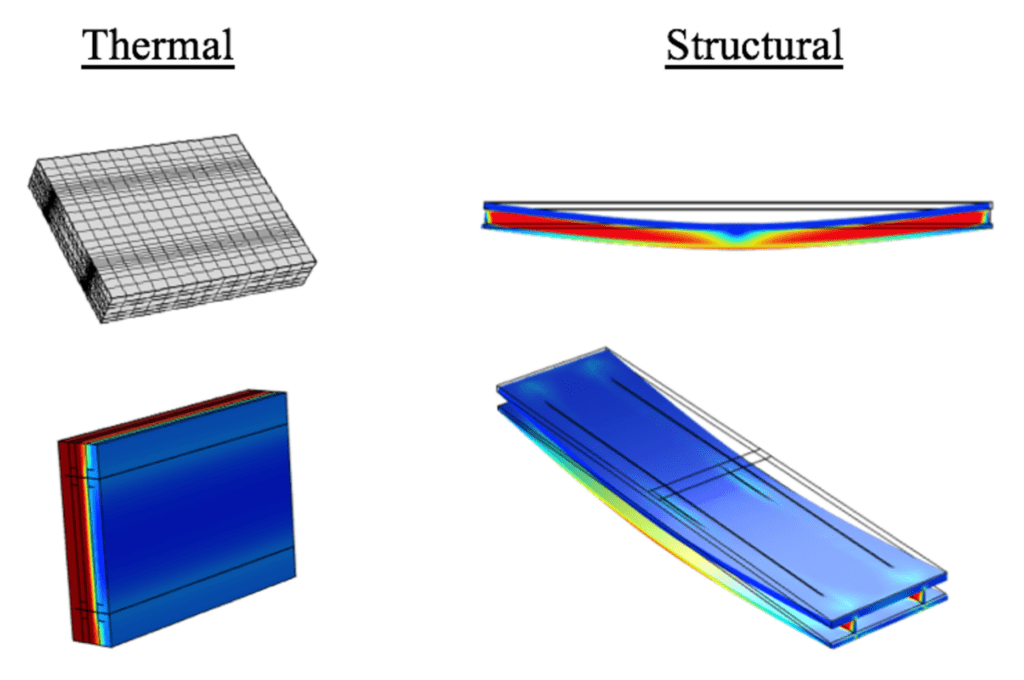Author: Dr. Oliver Kinnane, UCD School of Architecture, Planning & Environmental Policy. June, 2022
Precast sandwich panel cladding has merits as a sustainable and modern method of construction. They encompass a full wall build-up benefitting from the efficiencies of offsite construction, and embedded between two wythes of concrete; a structurally salient, often load-bearing, inner concrete wythe and an external weather-proofing thinner outer wythe. This article outlines a low embodied carbon sandwich panel, that can offer high thermal performance for future efficient building operation.
The IMPRESS H2020 project, now complete, included collaborators UCD Architecture, Trinity Engineering and Techrete amongst a wide range of European partners. The project focused on designing, testing and demonstrating innovations in lightweight sandwich panel cladding for new build applications and for renovation applications. Output from the project included a suite of academic papers focused on the range of innovations including an analysis of the structural composite nature of the panels, thermal testing of panels, the high performance concrete mix, the practical development of panels, shear behaviour of thicker dimensioned panels, and an extensive review of precast sandwich panel innovation, design and testing. The drive throughout this project was to create a panel that could offer a low embodied carbon solution for the thermal performance enhancement of existing buildings. Precast concrete clad, concrete frame buildings abound across Europe, accounting for a considerable proportion of the housing stock, and lots of public and institutional buildings built in the 1950s, 60s and 70s. These buildings embody considerable carbon. The bones of these buildings are generally healthy but the skin has often degraded.
A project rule was set – the sandwich panels were to be no heavier than the single skin panels they replaced, but were to offer a time efficient retrofit solution, and achieve the highest standards of thermal performance. The designed thin precast concrete sandwich panels included novel high performance, fibre reinforced concretes in wythes of 20mm thickness. Embedded between these wythes, that spanned 3m, was vacuum insulation that ensured a high thermal performance while maintaining a thin panel section. The structural innovations of this research are the focus of part two of this blog, by Prof. Roger West of Trinity College, School of Civil and Structural Engineering. This article instead focuses on the innovations in low embodied carbon concrete and the high thermal performance of the panels.
High Performance Fibre Reinforced Concrete (HPFRC)
Novel low carbon High Performance Fibre Reinforced Concrete (HPFRC) mixes were developed. The environmentally improved HPFRC include coarse aggregates (to reduce cement paste volume), non-corrosive fibres (to eliminate the risk of corrosion) and a high dosage of supplementary cementitious materials (to again minimise the cement content). Compressive strengths of 100 MPa and pre-cracking flexural strengths above 8 MPa were achieved. Importantly it was also found that the inclusion of resin coasted glass and basalt fibres (2.3% by volume) resulted in deflection hardening behaviour under flexural loading conditions. An environmental investigation found that the embodied carbon of a precast facade can be reduced by 50% when using the outlined mix enhancements over standard concrete.
To evaluate the thermal performance of the panels, a sample thin design was experimentally tested using a hot plate apparatus. Finite Element modelling was then used to further investigate the common features of thin panel designs and potential areas of heat loss. The analysed thin sample sandwich panel (150 mm thick) achieves an average U-value of 0.324 W m−2 K−1; this is 16% lower than that of a typical 315 mm thick sandwich panel with 100 mm of polystyrene foam insulation. Thermal bridging was identified as a source of heat loss in the thin wall design, accounting for up to 71% of the total thermal transmittance of the tested thin sandwich panel. In standard walls this is usually less than 20%. Further investigations and design reiterations showed that some of the features of the tested design could be improved to significantly reduce the effect of the thermal bridging and reduce the U-value by 59% to 0.13 W m−2 K−1 in an optimised panel design.


These innovations resulted in significant enhancement of sandwich panels and design guidelines and evidence for next generation low embodied carbon, high performance sandwich panels – panels that allow full wall installation in a single, time efficient process.
For more detailed information on the project and accompanying publications click here.
Watch this space for part two by Professor Roger West, coming soon.
